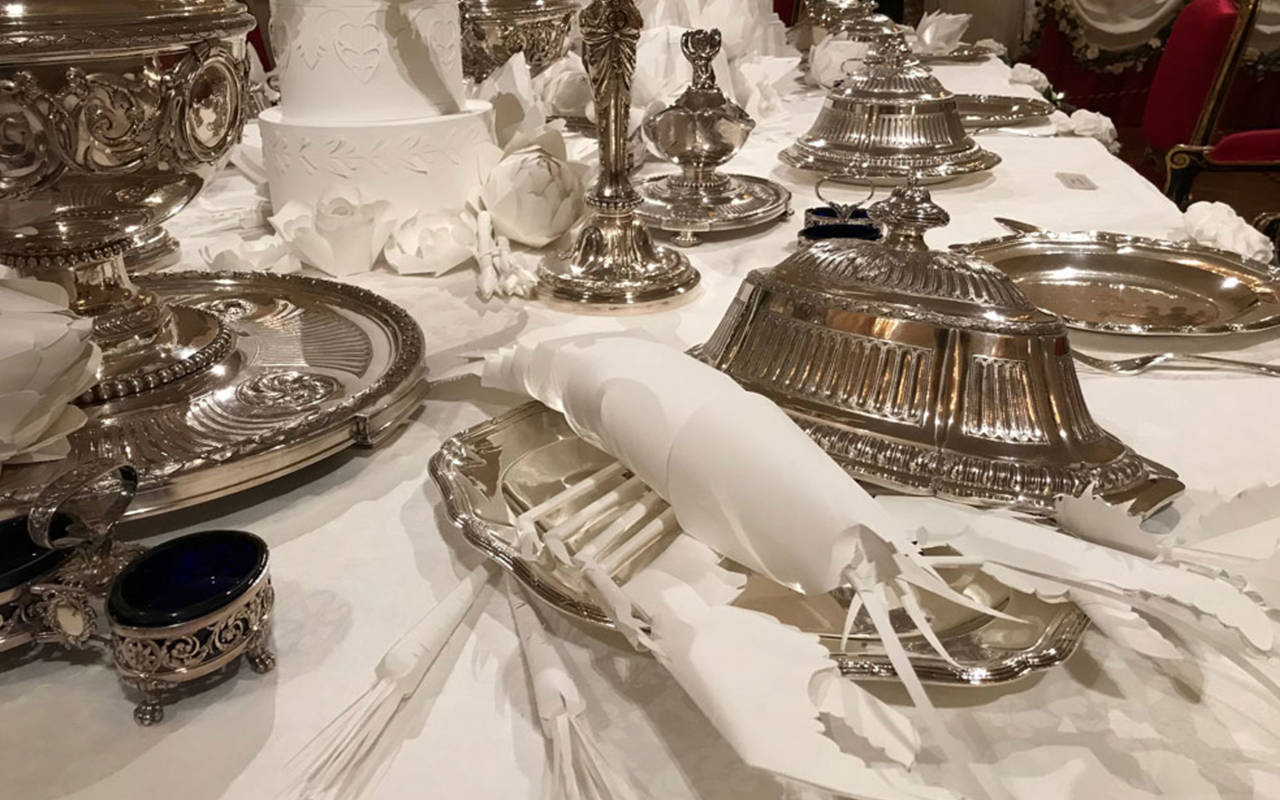
Inspiring Christmas Carnival
The theme this year for the festive season at Waddesdon Manor is Carnival. The Collections team worked in collaboration with designer Jane Le Bon and tutors and students from Guildhall School of Music & Drama
The theme reflects the spirit of the festivities celebrated in the many books, drawings, paintings, porcelain and silverware found in the collections. The Manor itself can be interpreted as a building in fancy dress, a late 19th-century manor in the guise of a French Renaissance château. Just like the many fancy dress balls attended by Ferdinand and Alice de Rothschild, the building and its collections are a fantasy, a kind of living history where one steps back in time with the help of its 17th- and 18th-century contents. Carnival incorporates all of these elements – it is about dressing up and having fun – what better way to celebrate the festive season?

Built in the 1880s by Baron Ferdinand de Rothschild as a place to entertain, the manor was made to dazzle and delight. Inspired by this history, visitors to Christmas Carnival are invited to step inside and explore the fantastical displays and unique decorations that bring Waddesdon Manor to sparkling festive life.

As much of the house is ‘put to bed’ for the winter months (rooms are closed to the public to enable deep cleaning and conservation to take place), the Christmas period offers a different experience of Waddesdon. The rooms within the East of the Manor and the Bachelors’ Wing will be dressed to evoke the glitz and glamour of the festive season, featuring ten 4.5m trees adorned with over 10,000 fairy lights, and 3,000 Harlequin, plaid, and jewel-themed baubles. From dressing up to fireworks, each of the decorated rooms tells a different story influenced by historic celebrations and carnival-related pieces within the collection.

This tree in the Blue Boudoir is inspired by 18th-century ladies’ fashion. Ladies adorned their wigs and their clothes with many accessories, such as flowers and feathers. Specialist shops selling these wares proliferated in the capitals of Europe, but Paris was the centre of the luxury goods market, as it is today. Current events even played their part as inspiration for outfits, with wigs famously incorporating ships and comets.
These fashions were the subject of many popular publications, eventually leading to satirical depictions of over-the-top extravagance. Fancy goods certainly led to fancy dress! The tree is decorated with handmade shoes and handbags along with colourful feathers and beads. The pastel palette is also inspired by the fashionable colours of the period.

Of course, no celebration would be complete without plentiful feasting. The table in the White Drawing room is set with a magnificent silver dinner service commissioned by George III in 1774 for use at state banquets. Also adorning the table are beautiful paper sculptures (including the lobster above) representing an imaginary banquet featuring the types of food eaten at extravagant events, such as those held at royal palaces during the 17th and 18th centuries.

This portrait of Miss Alice de Rothschild in Highland costume inspired the decorations adorning the tree in the Bedroom Corridor. It was fashionable to dress up in historical costume for photographs at the time. The decorations also allude to her activities as a collector, conservator and gardener. Renowned for her strict housekeeping standards, Miss Alice, who inherited Waddesdon after Ferdinand’s death in 1898, often kept a weeding fork in her pocket so that she could dig out any weeds she spotted whilst walking in the grounds.

The festival float in the Bachelors’ Wing bathroom is drawn from the many illustrations in several 17th-and 18th-century books in the collection. This print depicts floats from the wedding festivities celebrated in Florence for the wedding of Cosmo II, future Duke of Tuscany and Archduchess Marie Maddalena of Austria in 1608. To this day, floats are an essential part of parades and celebrations all over the world. Land and water floats, chariots and machines were just as popular from the 16th to 18th centuries, appearing in most festivals, including royal entrances, carousels, marriage festivities and even theatrical performances.

Away from the Manor’s lavish interiors, visitors will find state-of-the-art animations and light installations. As daylight fades to dusk, highlights will be the enchanting disco ball tree along the Aviary Light Trail and the Instagrammable Tunnel of Light, next to the Stables, while the coloured lights illuminating the Manor’s façade will cause this distinctive Renaissance-style architecture to come to life. For the first time, the exterior of the Stables will be transformed by a light and sound show also inspired by the carnival theme that transforms objects and motifs from the collections into a wintry celebration of light and music, designed by Guildhall School of Music & Drama students.




